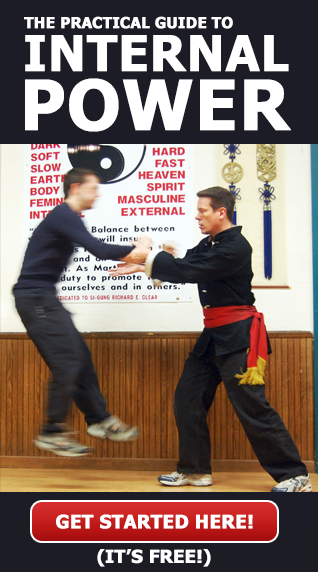Peng Jing translated into English as Ward Off is classically considered to be the first posturally based Tai Chi energy taught to beginners. I was first exposed to Peng Jing in the late 1970’s. By the mid 1980’s I was fairly capable with the immovable aspect of Peng Jing. In more recent years I have become much more aware of other aspects of Peng Jing. In this article I will attempt to explain a bit about Peng.
When I first set out to write this post I wanted to give a basic but complete definition for Peng Jing that anyone could easily understand. As I contemplated my personal practice and understanding of Peng Jing I became painfully aware that a short, simple and understandable definition of Peng Jing may not be possible. There simply may not be a basic way to describe Peng Jing that makes it easy for a beginner to comprehend without first training a number of other aspects of Tai Chi.
I believe that perhaps the best way to tackle the subject of Peng Jing succinctly is to simply list a number of the qualities necessary for Peng Jing. Due to the length and nature of these qualities I have written separate posts on on some of them that can be referred back to for clarification and I will respond to questions. The student may need to work on other skills that I have not listed here in order to learn to perform quality Peng Jing. Some of these qualities seem like they would be mutually exclusive to others. For instance, some of the Tai Chi classics talk about Peng being hard and soft at the same time. All of these qualities I have listed are present at the same time for real peng. That is just part of the duality (Yin and Yang) of Tai Chi.
Qualities Necessary for Peng Jing
- Wu Chi Alignment Principles – Particularly the head held up by a string with the rest of the body hanging
- Ground Path
- Sung (relaxed but not collapsed)
- Rooted & Heavy
- Alive, springy elastic and pliable compression ability in the soft tissue of the body giving the body the buoyant feel of a boat or ball on water.
- Ligament and tendon strength
- The “straight in the curve” body bows and spirals.
- Round Ball expansiveness in all directions at the same time that makes it so that your body space cannot be entered and at the same time deflects anything/one trying to enter off around the outer circle of the ball.
- Sensitivity to feel where the incoming force is coming from and neutralize it as well as draw power off of it.
- A healthy mix of physical and mental eventually becoming much more mental with only a bare minimum of physical necessary. Relax everything so that you use only as much as you need and no extra. Expand with your mind so that your mind creates the expression.

My favorite translation of Peng is Expanding and Spiraling, in every direction, in every moment.
The power drills into the Earth and your Opponent.